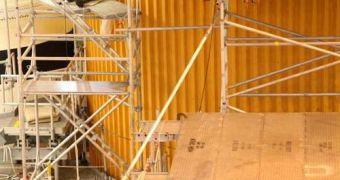According to an announcement made by the American space agency on Tuesday, January 11, it could be that space shuttle Discovery will be launched to the International Space Station (ISS) on February 24, after months of delay.
The spacecraft was originally scheduled to take off in early November, after having been rolled out to the Launch Pad 39A facility at the Kennedy Space Center (KSC) in late October.
But issues with its fuel valves, engine computers, and then external fuel tank have delayed the launch considerably, by a total of nearly five months – assuming the orbiter launches in February.
Discovery's STS-133 mission is its last. During the resupply flight, it needs to deliver a new Multipurpose Logistics Module (MPLM), as well as a robot developed jointly by NASA and General Motors. The machine is called Robonaut 2.
The main reason why its take off was delayed by so much is the large number of cracks found in its fuel tank supports. The external fuel tank (EFT), the large, orange structure to which the shuttle and its twin solid rocket boosters (SRB) are affixed, also revealed small cracks.
NASA officials announced a while ago that the damage to the EFT was too severe to address at the launch pad, and returned the orbiter to the KSC Vehicle Assembly Building (VAB). Engineers then conducted thorough X-ray scans of the fuel tanks and its supports.
Mission managers and controllers decided to set the new, February 24 launch date because they are now certain they've discovered the reason why the cracks developed on the EFT in the first place.
“It's been two months of very vigorous activity. It took a lot of investigation. I'm very confident that we have this figured out, and we have a fix that is easy to implement. That was the good news this past week,” says the NASA shuttle program manager John Shannon.
Studies have evidenced that the EFT and its supports got so damaged under a combination of factors, including stress that was put on the tank during assembly, and the fact that it was made up of a batch of structurally-weaker-than-usual stringer material.
Over the past couple of months, NASA experts have been adding reenforcement material where it was needed, in order to consolidate the EFT. “We're going to fly with a lot of confidence in this tank,” Shannon explains.
After Discovery launches, Endeavor will follow suit in April, while Atlantis could fly a final mission later in the year, Space reports.

 14 DAY TRIAL //
14 DAY TRIAL //